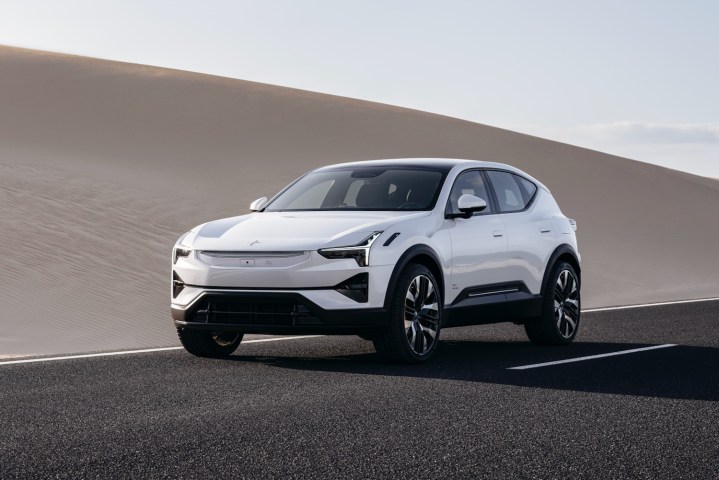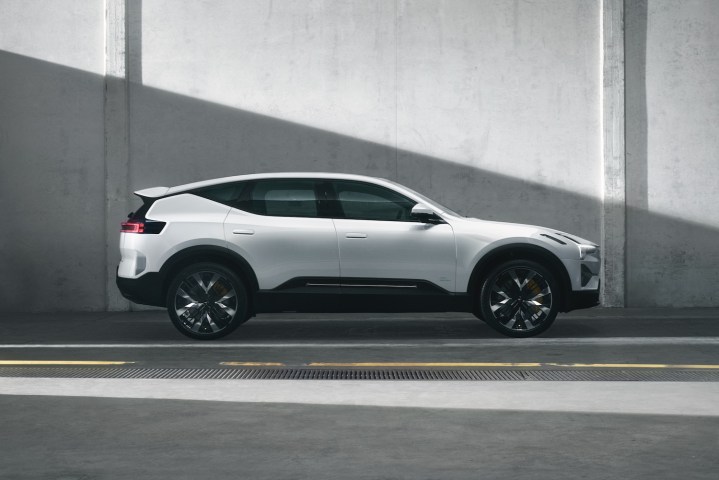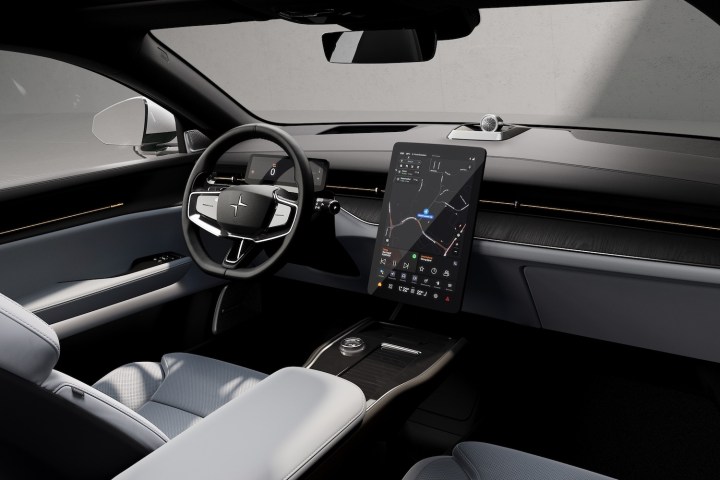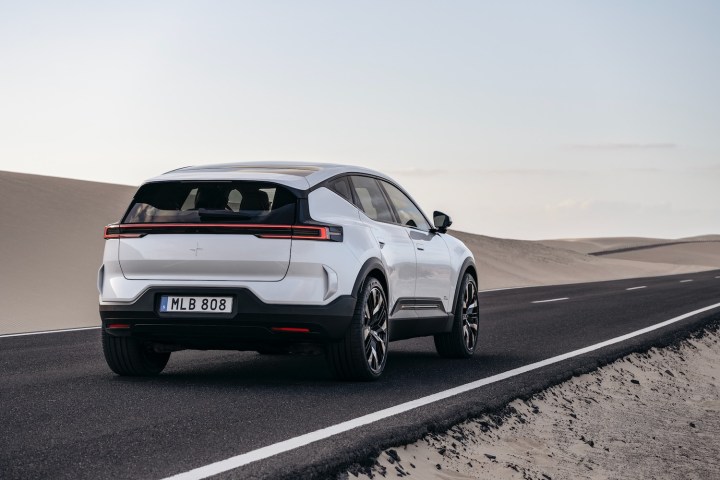For Volvo’s EV-focused Polestar spinoff brand, the third time really is the charm.
The brand’s first model, the Polestar 1 plug-in hybrid coupe, was built in low volumes and still had a combustion engine. The current Polestar 2 is a derivative of the Volvo C40 Recharge and XC40 Recharge. With the Polestar 3, the brand is really finding its footing.
Scheduled to go on sale in the fourth quarter of 2023, the Polestar 3 is the brand’s first SUV, and while it still shares much hardware and software with parent Volvo, it’s next-generation tech that’s blended with a unique design aesthetic and a greater emphasis on performance.
Design
Where the Polestar 1 and Polestar 2 recycled styling from old Volvo concept cars, the five-seat Polestar 3 debuts a new brand-specific design language. The scrunched-up “face” and minimal air-intake opening advertise the 3’s electric powertrain, while the pinched rear side glass gives it a more streamlined appearance than other SUVs — particularly those of parent Volvo. The headlights look like an enlarged version of the “Thor’s Hammer” LED elements from current Volvos, however.
While not officially confirmed, the Polestar 3 is expected to be twinned with the Volvo EX90, the parent brand’s upcoming all-electric flagship SUV. Both are expected to use Volvo’s SPA2 platform, a successor to the SPA (Scalable Product Architecture) platform underpinning most current Volvo models.
Because eliminating tailpipe emissions doesn’t totally erase a vehicle’s environmental impact, Polestar also emphasized sustainable materials, such as wool upholstery that, the automaker claims, can be certified as sustainably produced. Polestar also plans to conduct a lifecycle assessment of the 3’s environmental impact when production starts, and follow up with additional assessments through the production run to look for ways of reducing its carbon footprint.
Tech
The Polestar 3 debuts an Nvidia Drive computer for driver-assist systems, which is fed information from five radar modules, five cameras, and 12 ultrasonic sensors. Inside, two driver-facing cameras monitor for distraction, while an interior radar monitors rear-seat occupants. It’s intended to prevent children or pets from being accidentally left in the car, and is also linked to the climate control system to help prevent heatstroke or hypothermia, Polestar claims.
Standard driver-assist features include adaptive cruise control, forward collision warning, automatic emergency braking, lane keep assist, blind-spot monitoring, rear cross-traffic alert, run-off road mitigation, traffic sign recognition, and more. Pilot Assist, which can control acceleration, steering, and braking on highways at speeds up to 80 mph, is optional.
The infotainment system is based on Qualcomm’s Snapdragon Cockpit Platform, with a 14.5-inch touchscreen and 9.0-inch digital instrument cluster. Over-the-air (OTA) software updates are included for life.
The Polestar 3 uses an evolution of the Android Automotive OS system from the Polestar 2, with built-in Google Assistant, Google Maps, and Play Store connectivity providing a more streamlined experience than basic Android Auto. Expect the infotainment system to support Apple CarPlay and Bluetooth connectivity for other non-Android phones as well.
Specifications
The Polestar 3 launches with a dual-motor all-wheel drive powertrain that sends more power to the rear wheels by default to enable sportier driving dynamics. It’s rated at 489 horsepower and 620 pound-feet of torque in standard form and 517 hp and 671 lb-ft of torque with the optional Performance Pack.
Even the standard version will do zero to 60 mph in 4.9 seconds, Polestar estimates. That’s impressive for a vehicle that — in its lightest spec — weighs just under 5,700 pounds. With the Performance Pack, the zero to 60 mph time drops to 4.6 seconds. Both versions have a 130-mph top speed.
A 111-kilowatt-hour battery pack will provide around 300 miles of range for the standard version, but that drops to 270 miles with the Performance Pack, Polestar claims. DC fast charging at up to 250 kilowatts can complete a 10% to 80% charge in 30 minutes, while 11-kW Level 2 AC charging takes 11 hours to fully recharge the pack, according to Polestar’s figures.
Pricing and rivals
The Polestar 3 will launch in the U.S. in Q4 2023 in loaded form, with both Pilot Assist and a Plus Pack option package adding features like a 25-speaker Bowers & Wilkins audio system and 21-inch wheels. Base price for this version is $83,900 before destination, plus $6,000 for the Performance Pack.
Even with the Performance Pack, the Polestar 3 should undercut the six-figure Mercedes-Benz EQS SUV and Tesla Model X, while offering more range than the Audi E-Tron and Jaguar I-Pace. The Cadillac Lyriq offers 312 miles of range for under $65,000, but it’s only available in single-motor rear-wheel drive form for now, and supplies are likely to be constrained for the time being. The BMW iX is priced very close to the Polestar with a maximum 324-mile range, while the Rivian R1S focuses more on off-road capability than on-road handling.
The first batch of U.S.-bound Polestar 3s will be built in Chengdu, China, but production is scheduled to shift to Volvo’s South Carolina factory around mid-2024. That should help Polestar meet requirements for the $7,500 federal EV tax credit, but battery supply chains are a factor as well.
Editors' Recommendations
- Mercedes G580 electrifies an off-road icon
- Tech giant reveals nice price for new EV to take on Tesla
- Genesis turns up the heat with GV60 Magma concept
- Tesla faces new rival as a tech giant launches its first EV
- Porsche’s most powerful production car is an EV






